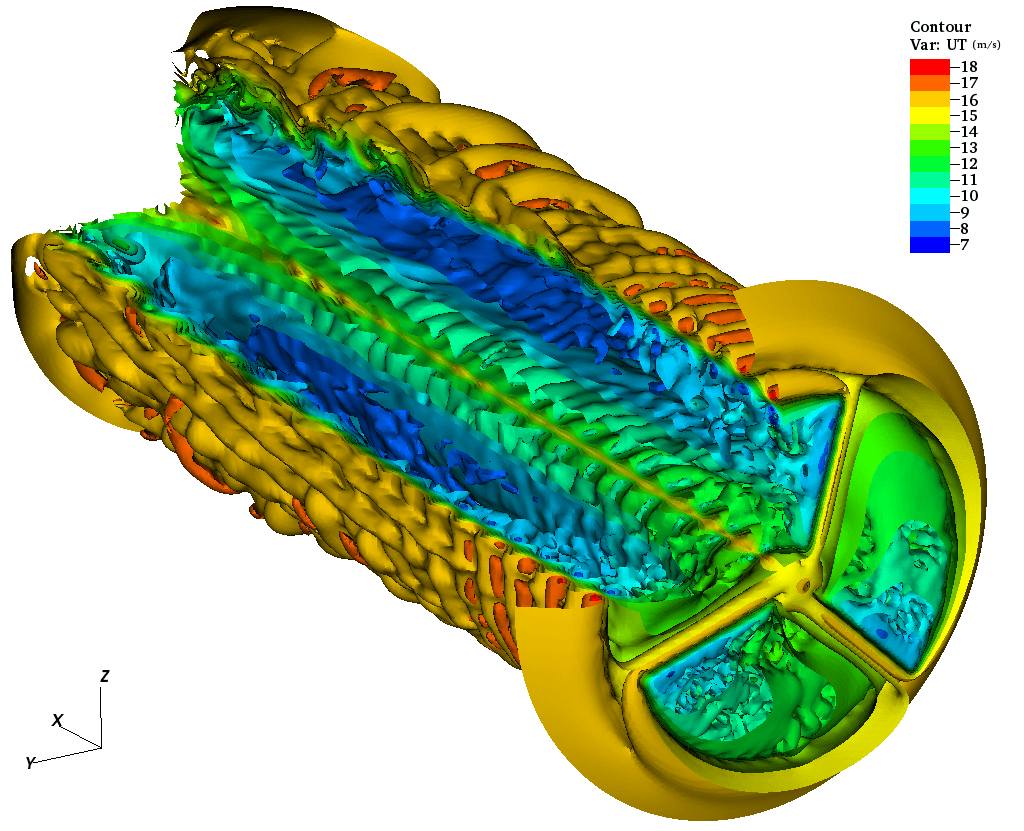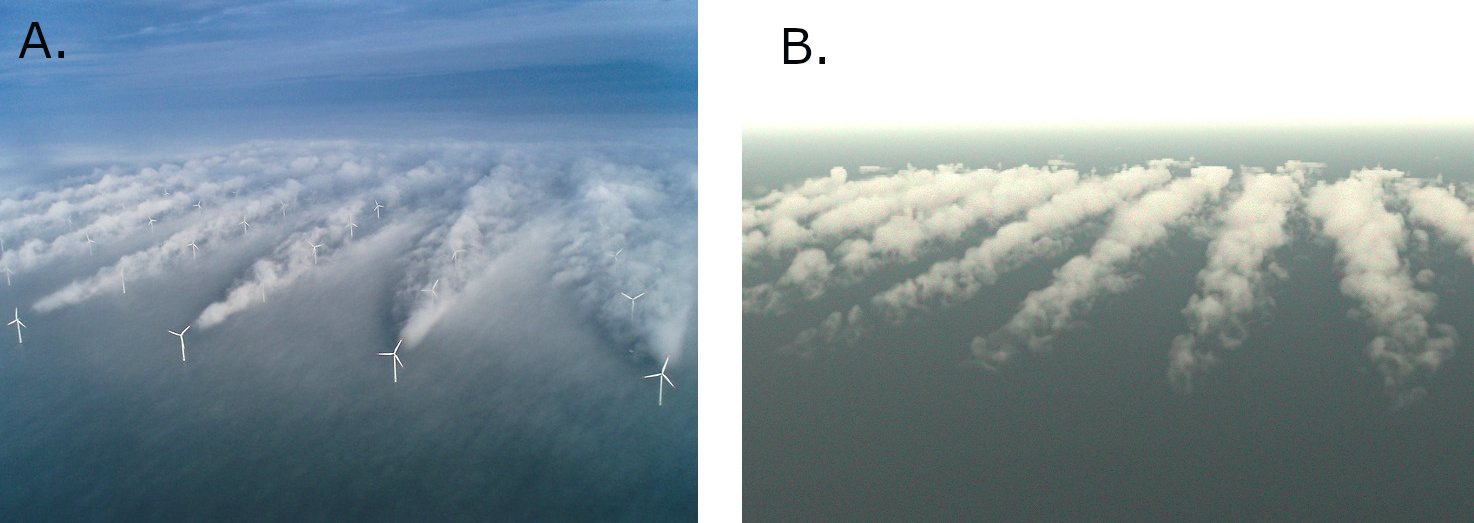23.09.2020
3 minutes of reading
Encouraged by the French long-term energy program, the increasing roll-out of wind energy technology is associated with new challenges. To address these, IFPEN, working in partnership with Météo France (the French national weather service), has developed a numerical tool capable of highly realistic modeling.
New challenges for the wind energy sector
The first challenge relates to the fact that, in the future, wind farms will increasingly be located in mountainous and offshore environments, alongside those already developed on flat terrain. The forecasting and optimization of energy production for these types of facilities require a better understanding of wind flows through wind farms.
The second challenge concerns the size of offshore wind turbines: ever larger, they will be required to interact increasingly with the atmosphere and hence with local weather conditions. Accordingly, it is important to be able to characterize these interactions.
The IFPEN - Météo France solution: a new simulation tool
To address these two challenges, one industrial and the other environmental, the IFPEN and Météo France partnership has created a new numerical tool. Developed within the framework of a thesis research project [1], the software is based on the coupling of aerodynamic wind turbine models and Meso-NH, the fine mesh weather model developed jointly by the CNRM (Météo France) and the French Aerology Laboratory.
The latter begins by realistically modeling the atmospheric1 boundary layer, taking into account a multitude of physical phenomena, such as relief, surface type, clouds, rain and even lightning. Simulation of the interaction between the aerodynamic stresses of the blades and the wind within the atmospheric boundary layer (ABL) then makes it possible to reproduce the flows around wind turbines as well as their wake (Figure 1).

1 The part of the atmosphere directly influenced by the presence of the earth’s surface (continental or oceanic)
A tool validated on various scales
Once the programming and development of the coupling had been completed, the partner teams proceeded to carry out different validation steps in order to verify the relevance of the model but also understand the limits of the tool by comparing its numerical results with experience.
The validation work was conducted for various scales, delivering conclusive results: the software can be used to simulate wake that is a long way from a wind farm in interaction with a hill, as well as wake that is nearby, downstream of each turbine blade (Figure 2) [2].

An atmospheric survey for enhanced realism
The final step consisted in verifying the tool’s capacity to reproduce complex meteorological phenomena within the framework of a carefully selected case study: a cloud formation at the offshore Horns Rev 1 wind farm off the coast of Denmark. Two photos taken from a helicopter (Figures 3.A and 4.A) captured the phenomenon that is familiar to the scientific community.

To determine the atmospheric conditions behind the phenomenon, the partner teams conducted a comprehensive survey using the date and time the photograph was taken, as well as data collected for a study carried out in 2013 [3]. They also analyzed additional data provided by NASA among others.
The reproduction of a realistic atmosphere around a wind farm, coupled with the numerical simulation of the latter (Figures 3.B and 4.B.), led to the creation and study of the cloud formation behind the turbines [4].
A promising tool
This new, soon-to-be open-source numerical tool pushes back the boundaries of what is possible for the numerical simulation of wind farms, by offering access to highly realistic modeling.
It is already being used by IFPEN to calibrate turbine layout optimization models, as well as to study interactions between wind farms and local weather conditions (such as the effects of atmospheric stability on production).
Références :
[1] Joulin, P-A., Modélisation à fine échelle des interactions entre parcs éoliens et météorologie locale. 2019. Thèse de doctorat soutenue le 13-12-2019 à Toulouse, INPT.
[2] Joulin, P. A., Mayol, M. L., Blondel, F., Masson, V., Rodier, Q., & Lac, C. (2019, July). Coupling the actuator line method to the high order meteorological LES model Meso-NH to study wind farm wakes impacts on local meteorology. In Journal of Physics: Conference Series (Vol. 1256, No. 1, p. 012019). IOP Publishing.
[3] D : Hasager, C. B., Rasmussen, L., Peña, A., Jensen, L. E., & Réthoré, P. E. (2013). Wind farm wake: The Horns Rev photo case. Energies, 6(2), 696-716.
[4] Joulin, P. A., Mayol, M. L., Masson, V., Blondel, F., Rodier, Q., Cathelain, M., & Lac, C. (2020). The Actuator Line Method in the meteorological LES model Meso-NH to analyze the Horns Rev 1 wind farm photo case. Frontiers in Earth Science, 7, 350.
Scientific contact : P-A Joulin






